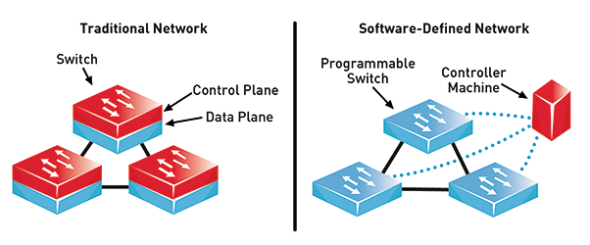First of all, you are right, there is not official definition from NIST or some similar standardization body and the fact that its meaning is fuzzy is exploited by marketing people.
The main point of SDN is that it allows to program network functions with APIs.
In the past, networking devices like switches and routers were only configurable using a proprietary interface (be it vendor specific tools or just the CLI on the device) and there were no APIs which allow to configure OSI L2 - L3 aspects like VLANs and routes but also L6 - L7 aspects like load balancing highly dynamically. Btw. In the case of L6 - L7 functions, the term NVF = Network Virtualized Function seems to be established by now.
This is needed especially for multi tenancy capable virtualized IaaS systems. You can create new VPCs and arrange them together at will. To really isolate tenants from each other, you need to have a L2 isolation and so the same dynamics that is offered for VPCs is propagated to the networking for interconnecting them.
Conclusion: It is about your first bullet with the extension, that the APIs must not necessarily be offered by some hardware appliance, it can also be offered by some pure software implementation.
Regarding OpenDaylight:
It is the OpenStack pendant for SDN. They also actively push integration with OpenStack. They say they are an "open, reference framework for programmability and control through an open source SDN and NFV solution". This means it provides (as you say) a façade for the manfold aspects of networking.
They have all the big names as members which probably means they have the power to establish a de-facto standard like OpenStack did. Members benefit in that they can provide plugins, integrations and adaptations for their products so that they seamlessly integrate with OpenDayligh and you only need to care about a single standard API.

